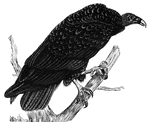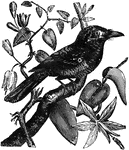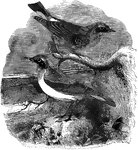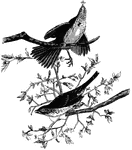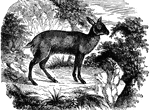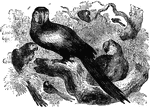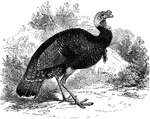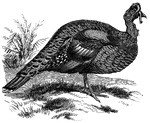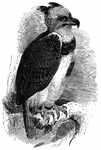
Harpy Eagle
Genus Harpyia, it is one of the largest, most fierce, and powerful eagles. It has a crest of…
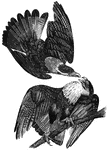
Caracara Eagle
The caracara eagle, genus Caracara found in Cental and South America, as well as portions of…
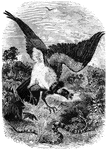
King Vulture
Genus sarcoramphus, a large vulture found in the tropical regions of the Americas, sometimes…
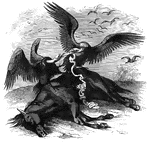
Turkey Buzzards
Genus Cathartes, found in the Americas, sometimes as far north as New England. These buzzards…

Fork-Tailed Psalurus
Native to South America, the males of this species are known for their pair of prominent tail feathers.

Night Hawk
Found in America, Mexico and the West Indies, this species averages nine to ten inches in length and…
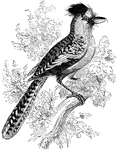
Batara
Taking its name from the Azara people of South America, the batara is the largest of the shrikes.
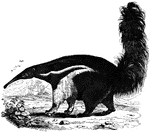
Tamanior
Inhabits most part of South America. About four feet in length. Spends the greater parts of its life…
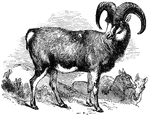
Mouflon
"The animals of this genus are distinguished by short tails, rogh hair; and enormous horns; they live…
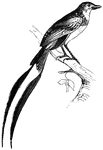
Tricolored Alectrurus
Native to South America, the tricolored alectrurus measures only six inches in length.

Red-Wing Thrush
The red-wing thrush migrates from the north to the south of Europe in the winter, feeding on worms and…
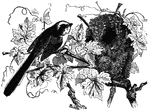
Long-Tailed Titmouse
The most noted of the titmice, the long-tailed titmouse is about five and a half inches in length, half…
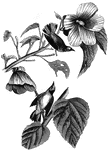
Blue-Winged Yellow Warbler
Found from Louisiana to New Jersey, the blue-winged yellow warbler migrates south to tropical parts…
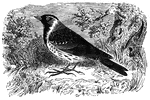
Common Snowbird
Found as far north as Greenland, the common-snow bird migrates as far south as Virginia in the winter.

Shore Lark
Found in the north of Europe and Asia, specimens of the shore-lark have been ound as far south as France…
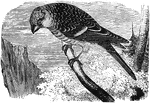
Pine Grosbeak
Found in the northern parts of America and Europe, the pine-grosbeak feeds mostly on seeds.
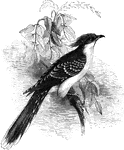
Great spotted cuckoo
The great spotted cuckoo divides its time between North Africa and Southern Europe, laying its eggs…
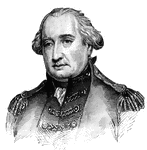
Lord Cornwallis
"Lord Cornwallis, key figure in the peace process between Britain and America."—E. Benjamin Andrews,…

Benjamin Franklin
"Benjamin Franklin managed men, the whilom printer, king's postmaster-general for America, discoverer,…

Robert Fulton
"Robert Fulton played a major role in the social culture at the turn of the century."—E. Benjamin…

Jefferson Davis
"Jeffeson Davis, president of the Confederate States of America."—E. Benjamin Andrews 1895
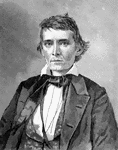
Alexander H. Stephens
"Alexander H. Stephens, Vice-President of the Confederate States of America."—E. Benjamin Andrews…
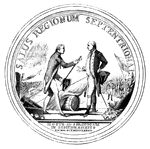
Gates Medal
Medal struck in honor of General Gates and his army. On the reverse side, Burgoyne is represented in…

Battleground near Fort Anne
Battleground near Fort Anne. This sketch was taken from the rail-road, looking north. The forest upon…
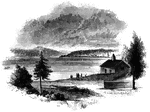
Sholes's Landing
View from Shole's Landing. This is a view from Chipman's Point, or Sholes's Landing, looking north.…
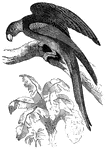
Carolina Parrot
The Carolina parrot is native to Guiana, but can be found as far north as Virginia. They often travel…

Parakeet Macaw
Native to South America, the parakeet macaw is renowned for its powers to imitate human speech.
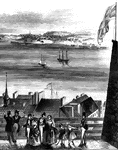
Point Levi
View of Point Levi from Durham Terrace, Quebec. This sketch is taken from Durham Terrace, near the north…
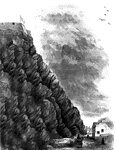
Cape Diamond
Cape Diamond, this is a view of the spot where Montgomery was killed. The cliff is Cape Diamond, crowned…

Arnold Wounded
Place where Arnold was wounded. This view is in a narrow alley near the north end of Sault au Matelot…
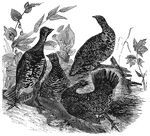
Canada Grouse
Also known as the spotted or spruce grouse, the Canada grouse is found in the northerly latitudes of…

Andelusian Quail
Also known as the hemipode, the Andelusian quail is found in Spain, North Africa, and Sicily.
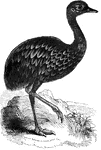
Pantagonian Rhea
Found in Southern Pantagonia, the Pantagonian rhea's plumage is of a dark, mottled color.
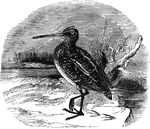
European Snipe
Ranging as far north as Scandanavia, Iceland, and Greenland in the summer, the European snipe migrates…
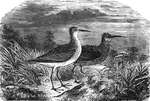
Curlew Sandpipers
Averaging about eight inches in length, the curlew sandpiper can be found in Northern Europe, Asia,…
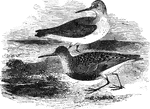
Dunlin
Also known as the purre, stint, ox-bird, and the sea-snipe, the dunlin is found throughout Europe and…
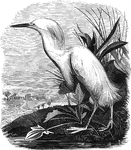
Great White Heron
White, often with a yellowish tinge, the great white heron of America closely resembles its European…
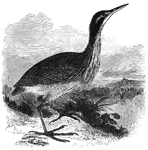
American Bittern
Measuring approximately twenty-six inches in length, the American bittern is a nocturnal hunter. It…

Flamingoes
The American flamingo stands about five feet tall, and is found throught tropical America, including…
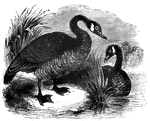
Canada Goose
Also known as the wild goose of America, the Canada goose averages about forty inches in length fully-grown,…
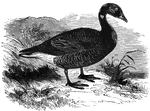
Brent Goose
A small species of goose common in both Europe and America, known in the United States as the brant.
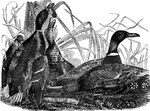
Mallard Ducks
The mallard, also known as the common wild duck averages about twenty-four inches in length. It inhabits…
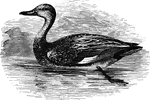
Gadwall
The gadwall (or gray duck) is nineteen inches long, and is found throughout Europe and America, as well…

Pintail Duck
The pintail duck measures twenty-six to twenty-eight inches in length (including the tail), and is found…
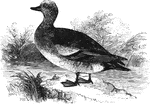
American Widgeon
The American widgeon (or baldpate) averages about nineteen inches in length. It is common in North America,…
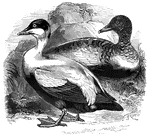
Eider Ducks
The eider duck is found throughout the northern regions of Europe and North America. The female lines…
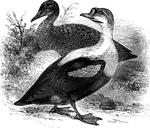
King Duck
Found in the Arctic regions of Europe, Asia, and North America, the king duck strongly resembles the…
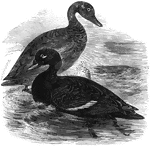
Velvet Scoter
Common in Europe and North America, the velvet scoter is also known as the white-winged coot.
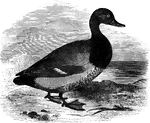
American Scaup Duck
The American scaup duck is common in North America, accidental in Europe. It is also known as the creek…
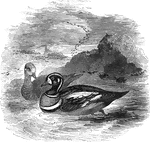
Harlequin Duck
"The harlequin duck is a very beautiful but small species, fourteen inches lng; fond of the eddying…
